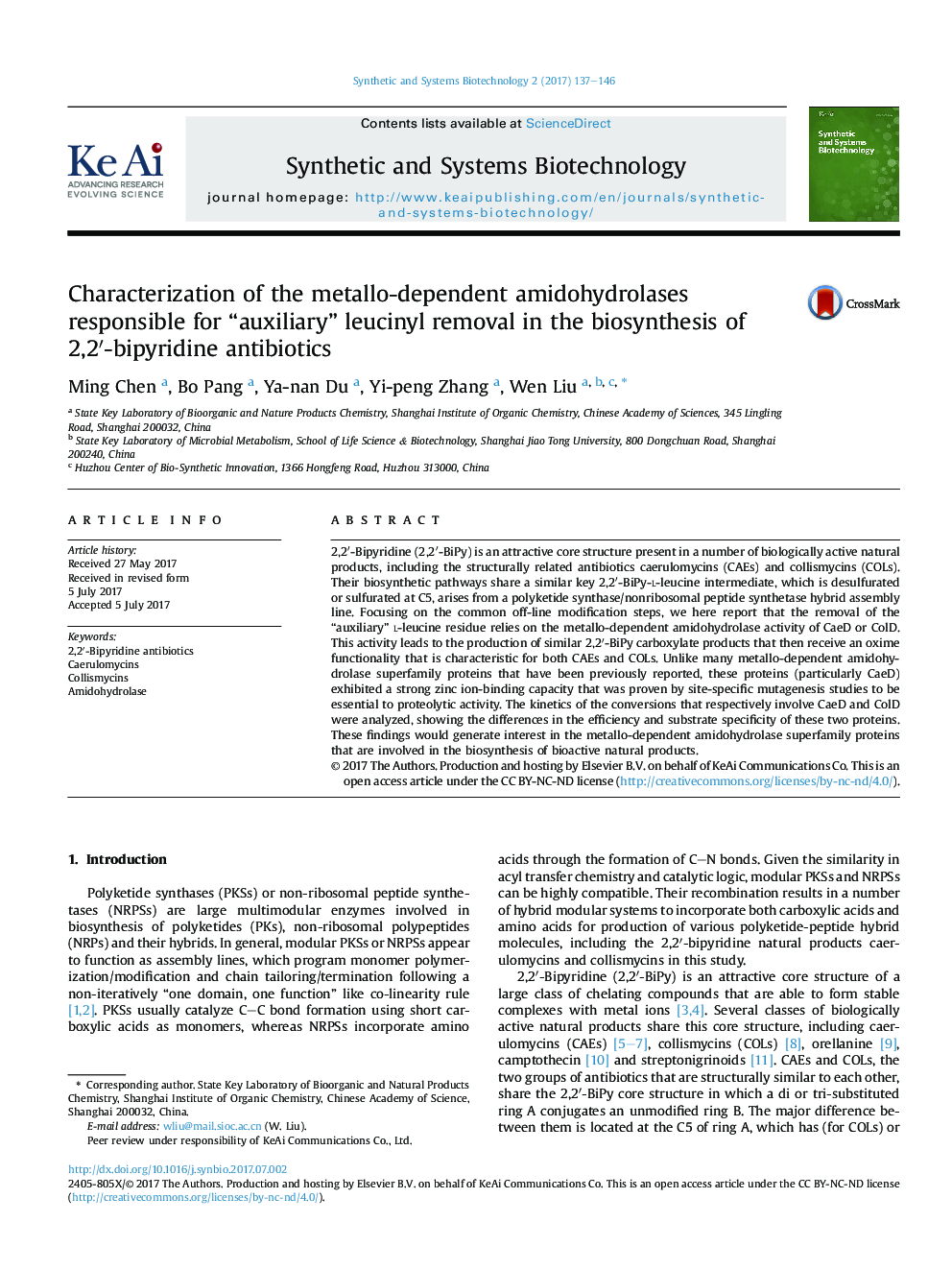| Article ID | Journal | Published Year | Pages | File Type |
|---|---|---|---|---|
| 5522850 | Synthetic and Systems Biotechnology | 2017 | 10 Pages |
2,2â²-Bipyridine (2,2â²-BiPy) is an attractive core structure present in a number of biologically active natural products, including the structurally related antibiotics caerulomycins (CAEs) and collismycins (COLs). Their biosynthetic pathways share a similar key 2,2â²-BiPy-l-leucine intermediate, which is desulfurated or sulfurated at C5, arises from a polyketide synthase/nonribosomal peptide synthetase hybrid assembly line. Focusing on the common off-line modification steps, we here report that the removal of the “auxiliary” l-leucine residue relies on the metallo-dependent amidohydrolase activity of CaeD or ColD. This activity leads to the production of similar 2,2â²-BiPy carboxylate products that then receive an oxime functionality that is characteristic for both CAEs and COLs. Unlike many metallo-dependent amidohydrolase superfamily proteins that have been previously reported, these proteins (particularly CaeD) exhibited a strong zinc ion-binding capacity that was proven by site-specific mutagenesis studies to be essential to proteolytic activity. The kinetics of the conversions that respectively involve CaeD and ColD were analyzed, showing the differences in the efficiency and substrate specificity of these two proteins. These findings would generate interest in the metallo-dependent amidohydrolase superfamily proteins that are involved in the biosynthesis of bioactive natural products.
